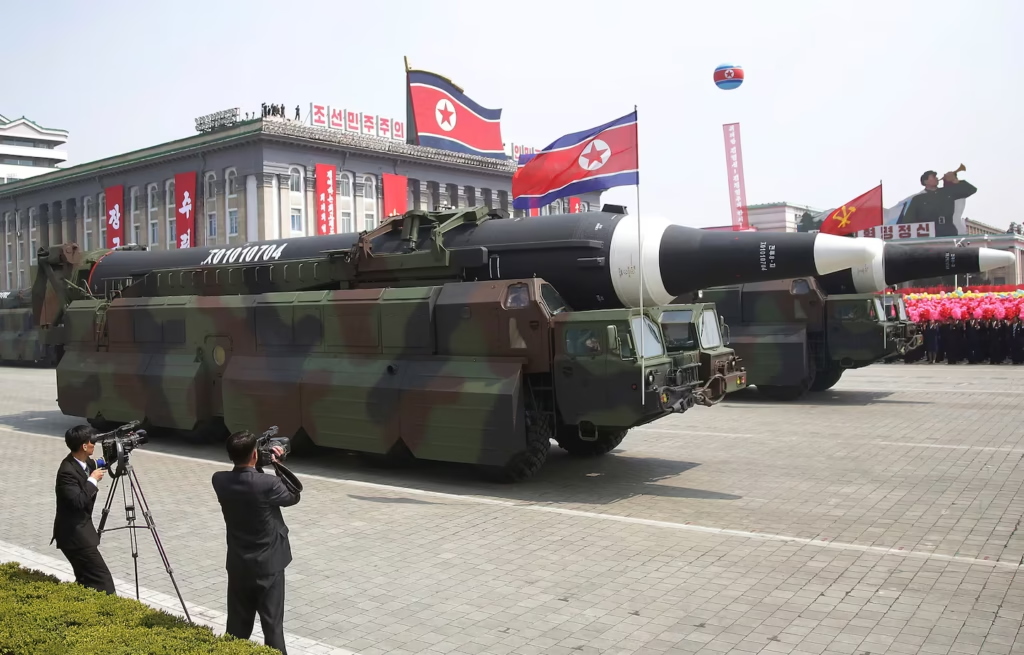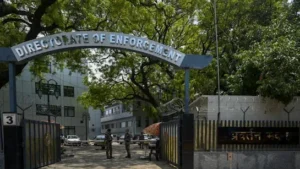The Perilous Path to Freedom: Escaping North Korea
Imagine living in a place where freedom feels so close, yet so incredibly far. A place where you can see the “other side” across a river, but heavily armed soldiers patrol the area, ready to shoot on sight. This is the reality for many in North Korea, a country notorious for its oppression and human rights record. Under its current leader, Kim Jong-un, escaping has become even harder, with more fences, more guards, and a chilling “shoot on sight” order. Yet, every single year, hundreds of North Koreans risk everything – their lives, their families, their very future – to flee their country. It’s a journey that can involve weeks of grueling desert treks, months in detention camps, and years spent in hiding, all in the desperate pursuit of something most of us take for granted: freedom.
| Escape Route | Challenges & Risks | Success Rate |
|---|---|---|
| Demilitarized Zone (DMZ) to South Korea | Heavily fortified, constant surveillance, armed guards, minefields. | Extremely rare, near zero survival chances. |
| By Sea to South Korea | Long swims (3+ km), exposure, reliance on tides/sea knowledge, surveillance. | Near impossible, only a handful succeeded. |
| To Russia (via border) | Heavily guarded border, deep rivers, requires connections/privilege. | Extremely rare, mostly high ranking citizens. |
| Through China (most common) | Risk of capture and forced repatriation to North Korea, human trafficking (especially for women), harsh desert treks (Gobi Desert). | Most promising, but still highly dangerous and multi stage. |
The Impossible Direct Routes: DMZ, Sea, and Russia
Geographically, North Korea shares borders with Russia, China, and South Korea. Logically, most North Korean refugees want to get to South Korea. Why? Well, there’s the shared language and cultural heritage, which makes integration a bit easier. And perhaps most importantly, South Korea actively welcomes defectors from the North, offering them citizenship.
If you look at a map, the direct route to South Korea might seem the easiest, perhaps even obvious. But in reality, very few manage to escape through this path. In between the two countries lies the Demilitarized Zone, or DMZ. This zone, created after the Korean War, is only “demilitarized” by name. It is, in fact, one of the most dangerous borders in the world, heavily fortified with armed guards constantly observing each other.
There’s a story of “Mr. Oh,” one of the rare few who managed to get through in 2017. He made a daring escape through the DMZ, driving a military Jeep at high speed. Surveillance footage from the South Korean military captured the intense pursuit. He eventually abandoned his car and continued on foot. North Korean soldiers fired multiple shots, hitting him several times. But Mr. Oh, against all odds, managed to cross the demarcation line, collapsing behind a wall on the South Korean side. He endured for hours until South Korean soldiers finally rescued him. Escaping through the DMZ is extremely rare; survival chances are near zero. It’s truly a desperate, last ditch effort.
Another rare, and equally dangerous, escape route to the South is by sea. Somewhere along the southeast coast, a North Korean man, in his mid twenties, once entered the ocean equipped with fins and a diving suit. Swimming for over six hours and covering more than three kilometers, he reached the South Korean shore near the town of Goseong. Despite being caught on surveillance cameras, South Korean forces only found him later, resting under a tree. He turned out to be a North Korean fisherman seeking asylum. The tides, it seems, had worked in his favor. Presumably, the man had prior knowledge of the sea conditions; without it, he probably wouldn’t have made it. Defecting this way, too, is near impossible. Only a handful of people have succeeded through this route.
Similarly, it’s extremely rare for North Koreans to defect to Russia. The border is heavily guarded, and the river is often too deep to cross. The few people publicly known for defecting to Russia are typically privileged or high ranking citizens who managed to cross with the help of their connections. For the vast majority, these direct paths to freedom are simply not viable.
- DMZ: Heavily fortified, dangerous, near zero survival rate. Example: “Mr. Oh’s” daring jeep escape and shooting.
- By Sea: Extremely difficult, long swims, requires specialized gear and knowledge of conditions. Example: Fisherman’s 6 hour swim.
- To Russia: Heavily guarded border, deep rivers, mostly limited to privileged individuals with connections.
- South Korea as Goal: Preferred due to shared language, culture, and active welcome for defectors.
The Chinese Route: A Path Fraught with Peril
For most North Korean defectors, the most promising, yet still incredibly dangerous, path is through China. The two countries are divided by two rivers: the Yalu and the Tumen. Some sections of these rivers are shallow and waist deep, and in winter, the water freezes solid. For those desperate enough, crossing over the ice might seem deceptively simple. But crossing is just the beginning. The real danger lies on the Chinese side, where defectors face constant threats of capture and forced repatriation back to North Korea.
Let’s consider the journey of “Ms. Lee,” a young woman who grew up in a modest home overlooking the Yalu River. From her backyard, she could see the hazy outline of Chinese villages. Her family was relatively privileged; they didn’t starve. Her father, a traveling salesman, frequently crossed into China for business, while her mother worked for the government and made extra cash trading smuggled goods from China. This was a common practice for North Koreans living near the border, driven by poor economic conditions to find additional income.
Life changed dramatically for Ms. Lee when she was 14, in 1994. One day, she returned from school to find her father missing. He had been arrested on his way back from China, accused of bribery and corruption. The family suspected he was tortured during his interrogation. Months later, he died in a hospital. Ms. Lee, her mother, and her little brother were left alone, devastated and disillusioned. Ms. Lee began questioning the contradictions she saw around her: the suffering during the famine, the lies in state propaganda, and the harsh realities of survival.
At the age of 17, she made the life changing decision to leave North Korea. In under a minute, she crossed to the Chinese side, her heart pounding. Her plan was to visit relatives up north. She sought out a Chinese smuggler who lived by the river, someone who frequently traded goods with her mother and whom she trusted. He agreed to drive her into the sprawling city of Shenyang. For the first time, Ms. Lee experienced a world vastly different from the one she had just left behind: bright lights, bustling streets, and an abundance of food and goods that left her overwhelmed.
Weeks went by, and she turned 18. She wanted to return to North Korea, back to her family. But then she got a sudden phone call from her mother. Rumors of her disappearance had spread across town. People suspected she might have left the country. Coming back would be too dangerous now; her family feared retaliation for letting Ms. Lee escape. So, her mother urged her to stay in China and live freely.
Ms. Lee remained in Shenyang. She began working in a restaurant and learned Mandarin. She lived in constant fear of being caught and adopted several new names to evade detection. One day, two men entered the restaurant. They asked for her and flashed their badges. It was the police. They took her away. “It’s over,” she thought, “this is the end.” At the station, they questioned her relentlessly and demanded she complete a written Chinese test to prove her fluency. She did so, hands shaking constantly, at the verge of a panic attack. But she passed the test. It was a narrow escape. Had the officers doubted her, she would have been deported to North Korea without a doubt. Everything she risked, every moment of her struggle, would have been for nothing. Later, she learned that someone she trusted with her secret had reported her to the authorities.
- Border Crossing: Two rivers (Yalu, Tumen) with shallow/frozen sections, offering a crossing point.
- Risk of Repatriation: Constant threat of capture and forced return to North Korea from China.
- Economic Drivers: Poor conditions in North Korea push border residents to smuggling for income.
- Personal Tragedy: “Ms. Lee’s” father arrested and died, leading to her decision to defect.
- Initial Freedom: Experiencing a vastly different world in China (Shenyang).
- Family Pressure: Mother urged her to stay in China due to fear of retaliation.
- Life in Hiding: Worked, learned Mandarin, lived in constant fear, used multiple aliases.
- Close Call: Interrogated by police, passed a fluency test, narrowly avoided deportation.
- Betrayal: Later discovered someone she trusted had reported her.
The Scourge of Human Trafficking
While transiting through China, many North Korean escapees fall into the hands of human traffickers in the border regions. These traffickers prey on the vulnerable, promising food and jobs. They specifically target people living in the harshest conditions, knowing their desperation. Once across the border, hope can quickly turn to horror, especially for women. A 2019 South Korean report estimates that a staggering 60% of North Korean women in China fall victim to trafficking, many forced into sex trade.
Ms. Lee’s journey continued to be fraught with danger. In 2002, she took the train to Shanghai, marking the beginning of a new chapter in her life. In the mega city, she met a broker who provided her with a new identity. She spent her entire savings on this ID. With it, she secured a job as an interpreter at a South Korean tech company. As she built her life in Shanghai, she saved money and even fell in love with a South Korean man. Together, they hatched a plan for her to seek asylum in Seoul, South Korea.
After years of hardship, Ms. Lee boarded a flight to South Korea. She was so close to freedom, but immigration officers doubted her story. She spent weeks in detention, being interrogated over and over again. Then, finally, she was granted permanent residency. She had made it. Years later, Ms. Lee used her savings to arrange the escape of her mother and younger brother. Today, Ms. Lee goes by the name of “Hyun-ah Lee.” She is a human rights activist, speaking out for defectors and advocating for freedom in North Korea. Her journey took over a decade, but her resilience and courage led her to live a life free from fear.
- Vulnerability: Many escapees, especially women, fall victim to human traffickers in China.
- Trafficker Tactics: Prey on desperation, promising food and jobs.
- High Incidence: 60% of North Korean women in China are estimated to be trafficking victims (2019 report), often forced into sex trade.
- Ms. Lee’s Continued Journey: Moved to Shanghai, obtained new identity, worked as interpreter, fell in love, planned asylum in South Korea.
- South Korean Asylum: Faced weeks of detention and interrogation before gaining permanent residency.
- Activism: Now a human rights activist, advocating for defectors and freedom in North Korea.
The Long Road to a New Life: Southeast Asia and Mongolia
For most North Korean refugees, escaping through China is almost unavoidable, but the country usually only marks the first stop. The ultimate destinations are often Vietnam, Thailand, or Mongolia. All of these countries offer sanctuary and a potential route to asylum in South Korea. And as terrible as it sounds, many journeys to get there are much more grueling than Ms. Lee’s.
Consider the fictional story of “Ms. Kim,” whose family was extremely poor. Ms. Kim worked as a vendor at an unofficial street market, with almost all her money spent on food for her family. She once believed her government’s promises that the supreme leader would provide for the people, but not anymore. One day, a friend whispered about a Chinese broker who helped people cross the border for a small fee, promising shelter, food, and even work. To Ms. Kim, it sounded like salvation. Maybe she could make enough money to provide for her family.
After weeks of preparation, Ms. Kim and her friend found themselves waiting by the river on a fresh summer night. A shadowy figure emerged – the broker. The moon hid behind thick clouds, and the only light came from the distant glow of Chinese towns across the river. They were ready to cross. The broker led them through the cold water. Ms. Kim noticed the absence of border guards; usually, there were at least two patrolling this part of the river. Her guess? The broker had bribed them.
On the Chinese shore, a car awaited. The broker insisted Ms. Kim ride ahead alone, claiming her friend would follow in a different car for safety. Numb with adrenaline, Ms. Kim hesitated but complied. She hugged her friend, unaware it was their final goodbye. As the car drove into the dark countryside, exhaustion overtook her. Ms. Kim fell asleep.
She woke to a nightmare. The car had stopped in a remote village. The driver told her she was meeting her “new husband.” His words sent chills down her spine. This had to be a joke, but no one seemed to be joking. Ms. Kim had been deceived. The broker had sold her to a middle aged farmer. For two years, Ms. Kim endured isolation, abuse, and constant surveillance. It felt like a never ending nightmare. She learned Mandarin in secret and scraped together money by selling eggs, always planning her escape in the back of her head.
One night, Ms. Kim seized her chance. With her hidden savings and a few belongings, she escaped. The following weeks, she traveled North. She had no plan, no direction, and no one to help her. After months on the run, she stumbled upon a network of defectors in the Korea Town of Beijing. They promised to help her reach Mongolia.
She knew going back to North Korea would make her a traitor. This meant torture and death for her and her family. She couldn’t go back. This strange, far away place seemed like the only chance at a free life, so she decided to go. The only thing standing in her way was the Gobi Desert. The size of Peru, it is extremely hostile to humans: freezing nights, scorching days, and no water. She joined a group of defectors and embarked on a grueling trek. Days blurred into nights as they walked through sandstorms, sharing sips of water and little food. After days of walking with almost no rest, Ms. Kim’s feet were bleeding. Only the thought of freedom kept her moving.
When they finally reached the Mongolian border, the group spotted a few soldiers. A man from their group volunteered and approached with a bribe, in case things went south. The others were still able to escape undetected. Ms. Kim nervously watched as the man from her group talked to the soldiers. Luckily, they were Mongolian and quite supportive. They guided the group to a detention center. Ms. Kim spent months in a refugee camp before finally being granted passage to South Korea. She is one of the few hundred that make it every year. One has to wonder how many more North Koreans would leave if only they could.
- Transit Countries: China is often the first stop; ultimate destinations include Vietnam, Thailand, or Mongolia for sanctuary.
- Broker Deception: Brokers may sell defectors into human trafficking, especially women, promising jobs/shelter.
- Gobi Desert Trek: A grueling, hostile journey (freezing nights, scorching days, no water) for those heading to Mongolia.
- Mongolian Border: Mongolian soldiers are often supportive, guiding defectors to detention centers and refugee camps for processing to South Korea.
- High Risk: Despite being a more common route, the journey through China and beyond is still extremely dangerous.
Key Takeaways and Summary
Escaping North Korea is an act of immense courage and desperation, a perilous journey driven by the hope for freedom. While direct routes to South Korea via the heavily fortified DMZ or treacherous seas are almost impossible, and defection to Russia is rare and often requires privilege, the most common, albeit still dangerous, path is through China.
The Chinese border, marked by rivers that can be crossed on foot or ice, is merely the first hurdle. Defectors face constant threats of capture and forced repatriation, and women are particularly vulnerable to human trafficking. The stories of individuals like Ms. Lee and Ms. Kim highlight the deception, hardship, and resilience required to navigate this treacherous landscape, often involving years of hiding, working illegally, and enduring abuse.
Ultimately, many seek asylum in countries like Vietnam, Thailand, or Mongolia, enduring grueling treks across harsh terrains like the Gobi Desert, before finally reaching a refugee camp and, if fortunate, gaining passage to South Korea. These journeys are a testament to the unyielding human spirit that refuses to live in chains, even when the path to freedom is fraught with unimaginable risks.
Key Important Points:
- Extreme Danger: All escape routes from North Korea are incredibly perilous, with high risks of capture, injury, or death.
- DMZ & Sea: Direct routes to South Korea are virtually impossible for the average defector due to heavy fortification and natural barriers.
- China as Primary Route: Most defectors go through China, but face the constant threat of forced repatriation and human trafficking, especially for women.
- Human Trafficking: A significant percentage of North Korean women in China fall victim to trafficking, being sold into forced marriages or sex trade.
- Long & Grueling Journeys: The path to freedom often involves multiple stages, including harsh treks across deserts and months in detention or refugee camps in third countries.
- Resilience & Hope: Despite immense suffering, defectors exhibit incredible courage and perseverance in their pursuit of a life free from oppression.
- South Korea’s Role: South Korea actively welcomes defectors, providing a final destination for those who successfully navigate the escape routes.





